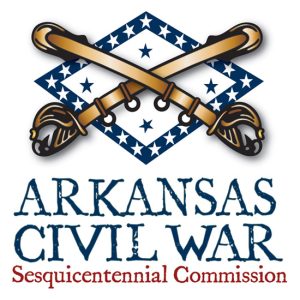calsfoundation@cals.org
Skirmish at Maysville (January 1863)
| Location: | Benton County |
| Campaign: | None |
| Date: | January 1863 |
| Principal Commanders: | Captain Henry Anderson (US); Colonel Thomas Livingston (CS) |
| Forces Engaged: | 150 men of the Third Indian Home Guard (US); Unknown (CS) |
| Estimated Casualties: | None (US); Unknown (CS) |
| Result: | Union victory |
A small engagement between a Union force of Native Americans and Confederate guerrillas, this action took place in far northwestern Arkansas. Following the Battle of Prairie Grove, the skirmish was an effort by Federal troops to maintain control of the area in the face of increasing guerrilla activity and protect nearby Indians loyal to the Union government. The exact date of the engagement is not recorded in official records.
After the Battle of Prairie Grove, Major General John Schofield took command of the Army of the Frontier and ordered Colonel William Phillips to take his Indian brigade to Maysville (Benton County). Phillips’s brigade consisted of the First, Second, and Third Indian Home Guard, a battalion of the Sixth Kansas Cavalry, and a four-gun battery. The unit was tasked with providing protection to nearby loyalists in both Arkansas and Indian Territory (present-day Oklahoma).
Arriving at Maysville on January 11, 1863, the unit established its headquarters at Camp Walker, which was quickly renamed Camp Curtis in honor of Major General Samuel Ryan Curtis. The units began to patrol the area despite bitter winter weather and several inches of snow on the ground.
Between January 12 and 15, Col. Phillips sent out a scouting party of approximately 150 men under the command of Captain Henry Anderson of the Third Indian. Riding from the camp near Maysville, the scouting party moved southeast toward Spavinaw Creek.
The Federals encountered a force of enemy guerrillas about twelve miles from the camp under the command of Colonel Thomas Livingston. Using three separate columns, the Union troops quickly attacked the enemy force, which numbered around 200. In the brief clash that followed, between twenty-five and thirty guerrillas were reportedly killed or wounded. In response to the assault, the guerrillas broke and fled in confusion. The Federals did not report any casualties.
Livingston and his men were reportedly from southwestern Missouri. They were working to return to their home state in an effort to operate behind Union lines. The majority of Confederate forces in the state retreated south of the Arkansas River after the Battle of Prairie Grove. After their engagement at Maysville, the guerrillas were successful in returning to Missouri, where they continued to engage Federal troops until Livingston’s death in Cedar County, Missouri, in July 1863.
While the engagement at Maysville was short, it demonstrates the brutality of the war in the state, especially when guerrilla units were involved.
For additional information:
Britton, Wiley. The Union Indian Brigade in the Civil War. Kansas City: Frank Hudson, 1922.
The War of the Rebellion: A Compilation of the Official Records of the Union and Confederate Armies. Series 1, Vol. 22. Washington DC: Government Printing Office, 1889.
David Sesser
Henderson State University
 Civil War Timeline
Civil War Timeline Military
Military ACWSC Logo
ACWSC Logo 



Comments
No comments on this entry yet.